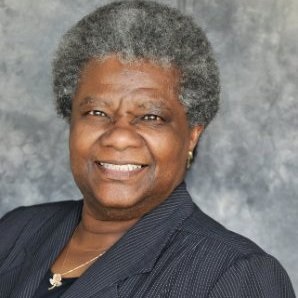Billie’s Blog: The Honor of Your Presence
“The most precious gift we can offer anyone is our Presence.” Thich Nhat Hanh
Have you ever agonized over what to give someone as a gift? Are you puzzled when someone asks what you want for a gift? How about giving them a hand-written “gift card” for your Presence to be “cashed” whenever the recipient feels the need. Or a card requesting the honor of their Presence for you? Presence is the state of being in which one devotes full time and attention to the needs—usually emotional or spiritual—of another.
Presence has been called a human superpower, and with good reason. Offering someone the dignity and respect of Presence may transform the lives of everyone involved. We think of “being there” when a loved one or a friend is hurting. Other forms of Presence are just as vital to our relationships. Attending the concert of a friend as a surprise. Mentoring someone as they master new skills and self-confidence. You may see the person’s eyes light up or their face brighten.
To be Present with someone is to first commit to creating a space where distractions can be held to a minimum. Lean into what they are saying or doing to hear the meaning beneath the words they speak. Pay attention to their body language, their vocal inflection, and their facial expressions. No checking or answering the cell phone. No watching television or the jumbotron at the bar. No doing chores or paying bills. Stay engaged by asking meaningful open-ended questions in a nonjudgmental tone and offering feedback when requested, when you need clarification, to summarize what the person said, or with permission. Gentle nodding or shaking your head lets the person know you are listening.
Some distractions are internal. The person may share some information that triggers memories of your own experience you want to let them know about (The “That happened to me, too.” Or “What happened to me was worse.” Or “I know how you feel.”). You may deal with some disconcerting news of your own, or you may be unsure where the person is going with the story, so you are concerned about your ability to be useful in the situation. Mental health disorders such as anxiety or depression, or life stressors also can affect your ability to focus. If your distractions are intense or severe, you may need to ask the person if the conversation can wait until you are feeling more able to be fully Present with them.
When you are fully present, the recipient is treated with the respect and dignity their situation deserves. When someone gives of their Presence, they exude authenticity, which helps the recipient to relax and to entrust their story. They trust they will be listened to, really heard, without judgment and with full confidentiality. You are allowed a vision into a tender part of the person’s life. You have the privilege of seeing the light within the other person through their eyes, voice, and body.
Set parameters and boundaries in advance, if possible, to avoid misunderstandings. Know your capacity for someone else’s hard conversations. Protect your personal and intimate boundaries with gentleness and self-compassion. Your Presence requires you to mostly listen.
Presence brings myriad interpersonal benefits. Relationships improve with your ever-increasing listening and communication skills. You develop and hone feelings of empathy and compassion for others. Presence helps create in you a sense of humility as you come to understand the plight of others.
There is more to Presence than interpersonal relationships. Presence slows you from the frenetic busyness of your days, especially during the winter holidays. Pay attention to what goes on around you. The people you encounter throughout your day, each with their own thoughts and cares. Let in a car when there is a line behind you. Do the same for someone in line at the office supply store. Leave home ten minutes early and try driving the posted speed limits and see how you feel.
Listen and watch for sounds and sights missed in haste. A cardinal perched on a snow-covered branch. A dad cooing to his baby in a carrier while in line at the grocery store. Notice signs of life everywhere around you. Be Present with life and all it offers. While anything but passive, Presence is not a verb, but a state of being in the world, a way of life, a lifestyle. Spend time in solitude, time to go within and give yourself the gift of your Presence.
Be Present with the important people in your life. Ask your loved ones how their day unfolded, how a challenge turned out for them, or what happened with a certain situation. Likewise, praise them for navigating a tough circumstance, even if it turned out differently from what they planned or hoped.
William Stafford framed the essence of Presence well when he wrote, “Will you ever bring a better gift for the world than the breathing respect that you carry wherever you go right now?”
Let us broaden our desires for the winter holidays and beyond. Employ the power of Presence in every aspect of your life to enhance and deepen all your relationships—personal, professional, and social; and remember your relationship with yourself. Presence is a precious and powerful gift, one that will stay with people for years to come, especially when delivered with a hand-written “gift card.” Or, when someone requests the honor of your Presence.
Billie Wade is a gregarious introvert whose primary interests are writing, lifelong learning, personal development, and how we all are affected by life’s vagaries.
Issues facing Black people, women, the LGBTQ community, and aging adults are of particular concern to her. She enjoys open-hearted dialogue with diverse people. The opinions expressed here are her own.


